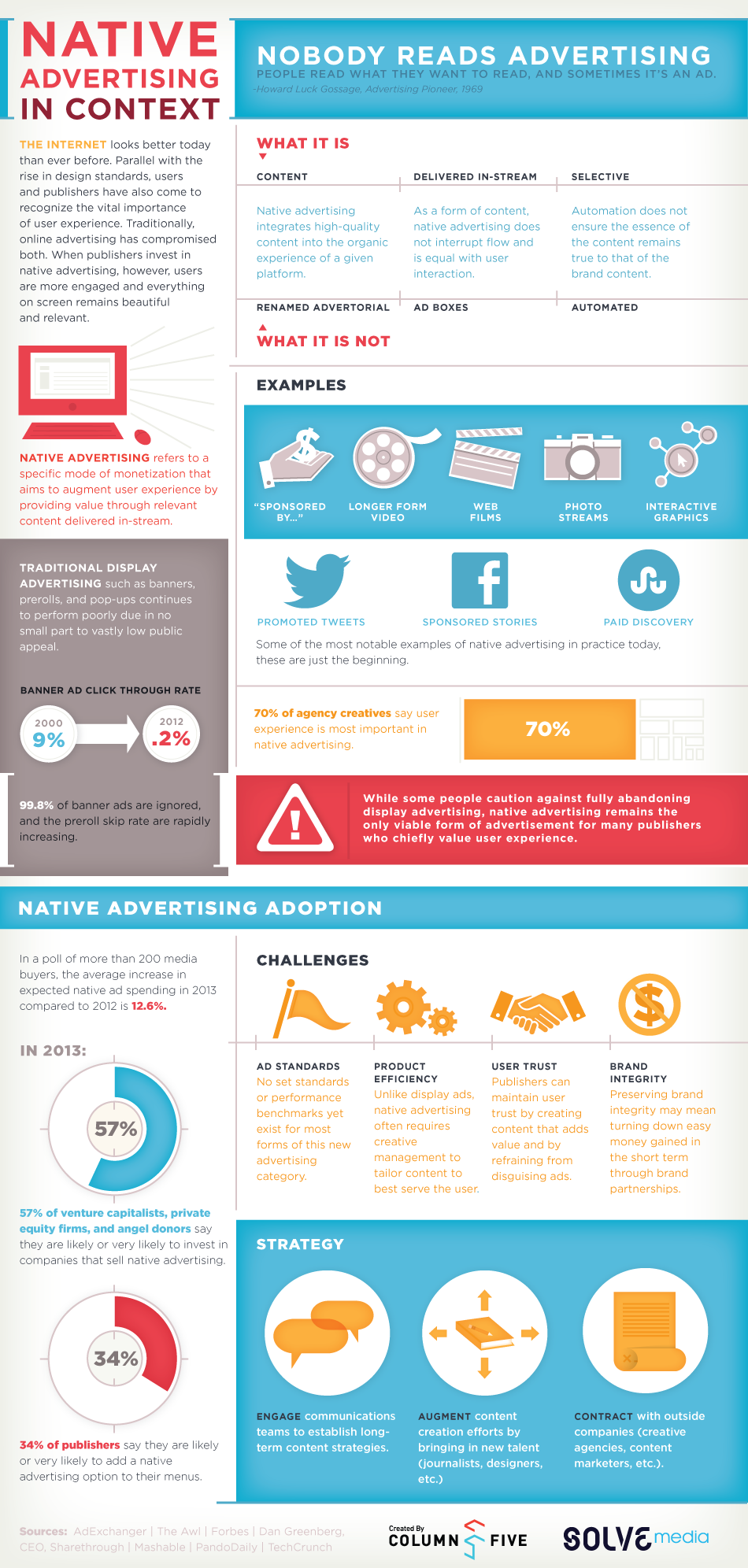Brands
Why Native Marketing Is Rising [INFOGRAPHIC]
Native advertising is coming on strong. This year the Internet saw an explosion of native advertising and branded content, as well as the downfall of the banner ad.
According to an infographic by Solve Media and Column Five, native advertising is, in technical terms, “a specific mode of monetization that aims to augment user experience by providing value through relevant content delivered in-stream.” Examples of it include sponsored posts, long form videos, photo streams, sponsored stories, promoted tweets, and interactive graphics.
In 2000, the banner ad click through rate was nine percent. Today, that number has dwindled to 0.2 percent. In addition, the infographic claims that the preroll skip rate is rapidly increasing.
Since this form of native marketing is so new, there are no benchmarks or set standards for success. It’s not easy to gain consumer trust, either. The content has to add value and not just be a straight up ad.
According to the infographic, “the average increase in expected native ad spending in 2013 compared to 2012 is 12.6 percent.”
Thirty four percent of publishers are likely to add native advertising to their website menus, while 57 percent of private equity firms, venture capitalists and angel donors say they are likely to invest in companies selling native advertising.
One hugely popular method of native advertising is to sponsor posts or pay for promoted pieces of content. For example, as Mashable’s Chris Schreiber points out, brands are paying for promoted videos on YouTube, highlighted posts on Tumblr, and promoted articles on Gawker. BuzzFeed does native advertising all the time.
Dan Greenberg of AdAge argues that branded content/native advertising requires more creativity than simple banner ads and disruptive advertising.
“As publishers pin their business models on native inventory, these ad placements are allowing agencies and brands creative leeway to think outside the ‘banner box’ — fostering a new era in creative development,” he says. “Today’s agency must be thinking about a wide range of content, including serialized videos, in-game ads, photo feeds, meme-jacks and branded music playlists.”
Images courtesy of Sergej Khakimullin/shutterstock


Get better at your job right now.
Read our monthly newsletter to master content marketing. It’s made for marketers, creators, and everyone in between.




